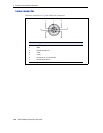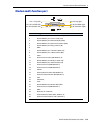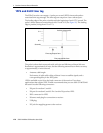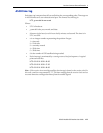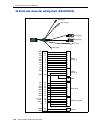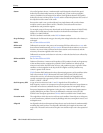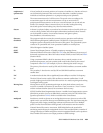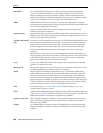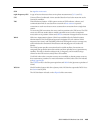
SPSx51 Modular GPS Receivers User Guide 179
Glossary
1PPS Pulse-per-second. Used in hardware timing. A pulse is generated in conjunction with a
time stamp. This defines the instant when the time stamp is applicable.
almanac A file that contains orbit information on all the satellites, clock corrections, and
atmospheric delay parameters. The almanac is transmitted by a GPS satellite to a GPS
receiver, where it facilitates rapid acquisition of GPS signals when you start collecting
data, or when you have lost track of satellites and are trying to regain GPS signals.
The orbit information is a subset of the emphemeris / ephemerides data.
AutoBase AutoBase technology uses the position of the receiver to automatically select the
correct base station; allowing for one button press operation of a base station. It
shortens setup time associated with repeated daily base station setups at the same
location on jobsites.
base station Also called reference station. A base station in construction, is a receiver placed at a
known point on a jobsite that tracks the same satellites as an RTK rover, and provides
a real-time differential correction message stream through radio to the rover, to obtain
centimeter level positions on a continuous real-time basis. A base station can also be a
part of a virtual reference station network, or a location at which GPS observations are
collected over a period of time, for subsequent postprocessing to obtain the most
accurate position for the location.
BINEX BInary EXchange format. BINEX is an operational binary format standard for
GPS/GLONASS/SBAS research purposes. It has been designed to grow and allow
encapsulation of all (or most) of the information currently allowed for in a range of
other formats.
broadcast server An Internet server that manages authentication and password control for a network of
VRS servers, and relays VRS corrections from the VRS server that you select.
carrier A radio wave having at least one characteristic (such as frequency, amplitude, or phase)
that can be varied from a known reference value by modulation.
carrier frequency The frequency of the unmodulated fundamental output of a radio transmitter. The GPS
L1 carrier frequency is 1575.42 MHz.
carrier phase Is the cumulative phase count of the GPS or GLONASS carrier signal at a given time.
cellular modems A wireless adaptor that connects a laptop computer to a cellular phone system for data
transfer. Cellular modems, which contain their own antennas, plug into a PC Card slot
or into the USB port of the computer and are available for a variety of wireless data
services such as GPRS.
CMR
CMR+
Compact Measurement Record. A real-time message format developed by Trimble for
broadcasting corrections to other Trimble receivers. CMR is a more efficient
alternative to RTCM.
covariance A statistical measure of the variance of two random variables that are observed or
measured in the same mean time period. This measure is equal to the product of the
deviations of corresponding values of the two variables from their respective means.






